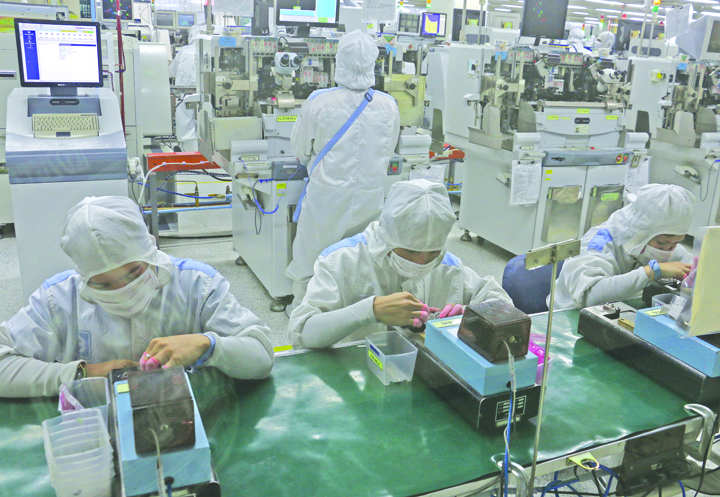
DESPITE the “roadblocks,” the Semiconductor and Electronics Industries in the Philippines Foundation Inc. (SEIPI) said it is optimistic that it can overcome the challenges through close collaboration between the public and private sector.
In a statement on Wednesday, SEIPI said it “continues to advocate for the industry’s well-being by voicing out legislative and regulatory concerns and providing relevant recommendations that will improve the business environment in the Philippines.”
The organization of electronics companies in the Philippines said it looks forward to the “new heights” that it can reach in 2023.
In fact, SEIPI said it met with Trade Secretary Alfredo E. Pascual to discuss the prevailing issues in the industry and its impact on foreign investments, and what can be done to prevent further “capital flight.”
Moreover, SEIPI gave updates on what it has been pushing and working for. It noted that it is working on the implementation of the Commission on Election’s Ban on Firearms and Controlled Chemicals in light of the postponement of the Barangay and Sangguniang Kabataan Elections (BSKE).
SEIPI also noted that it is advocating that non-manufacturing jobs in the Philippine Economic Zone Authority (PEZA) Registered Business Enterprises (RBEs) be allowed to adopt a work-from-home arrangement without the threat of losing their incentives.
As for the industry’s milestones, SEIPI said in a statement on Wednesday, “As of September 2022, the cumulative exports reached $35.34 billion, a 4.71 percent increase from last year’s figures.”
This, SEIPI noted, was 60.60 percent of the $58.31-billion total Philippine commodity exports, thus retaining the industry’s position as the country’s top commodity exporter.
Although it stays on top, SEIPI President Danilo C. Lachica earlier stressed that the industry also faces its fair share of pain points as it grapples with global headwinds such as the peso depreciation, among others.
The SEIPI chief told reporters in October that contrary to conventional wisdom that peso depreciation will benefit makers of electronics and semiconductors, “Ironically, a devaluating peso is good for exporters. However, that’s offset by high power cost, high fuel cost, and everything.”
Lachica also earlier said that leveling the playing field in operating cost is important because “from the multinational’s perspective, incentives or not, they’re (investors) gonna go to the country which gives the most competitive operating cost in terms of cost per unit.”
Opportunities
SEIPI said in a statement on Wednesday that there are also opportunities within the industry.
In fact, the organization unveiled its industry roadmap called the Product and Technology Holistic Strategy (PATHS), which it said foreshadows the Department of Science and Technology (DOST) roadmap for the electronics industry for 2022-2028.
“The roadmap includes plans to set up an IC (Integrated Circuit) Design Training Laboratory (ICDL). The ICDL project proposal will be submitted for DOST Grants-in-Aid funding in consolidation with a Lab-Scale Wafer Fabrication Facility, to capacitate IC Design training and semiconductor device fabrication in the Philippines. The ICDL will complement DOST’s Center for Integrated Circuits and Devices Research (CIDR) ecosystem in strengthening the country’s competitiveness in the IC design and semiconductor technology development,” SEIPI said in a statement on Wednesday.
Image credits: Nonie Reyes
